An Experience Of A Lifetime

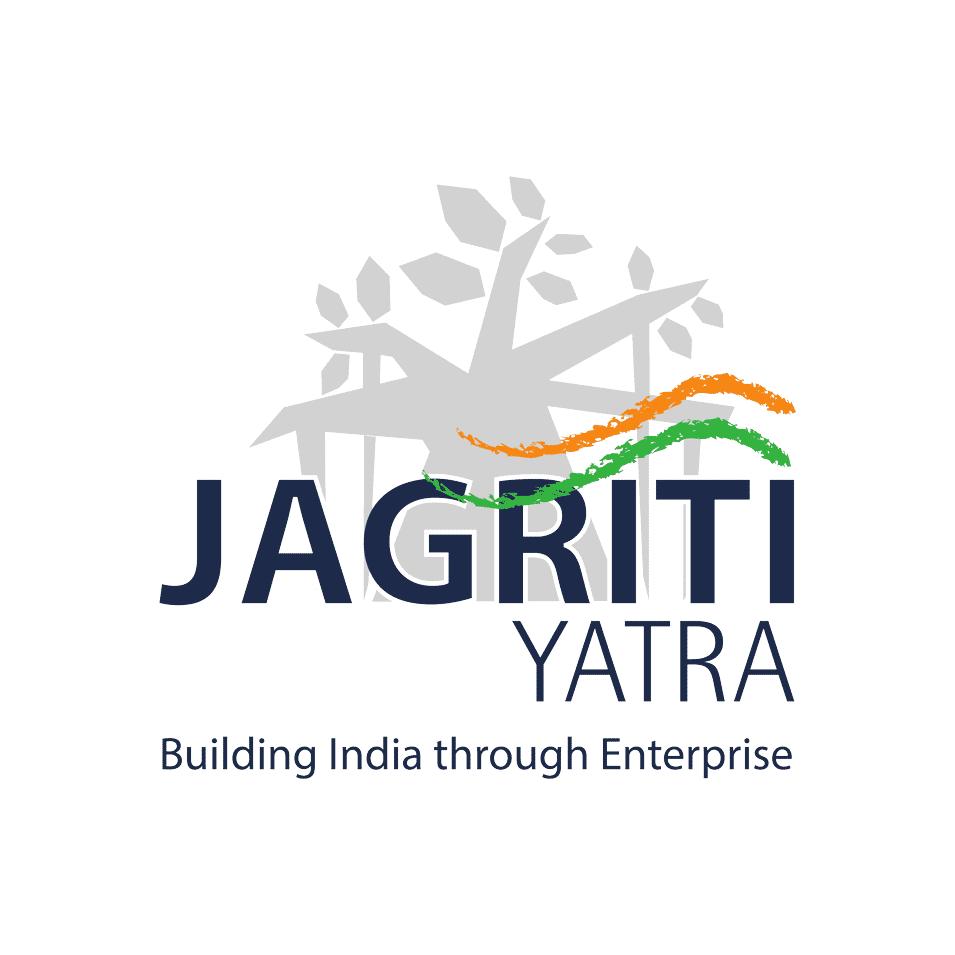 Dhananjay Suthar
Dhananjay Suthar
!! A Short Wrap up if you can’t go through the whole document !!
Our nation has been a forebear of plurality and diversity; a fact that has been validated across our cultural fabric time and again. The current scenario of our cultural and demographic diversity is a testament to that and young people, spread across the geography of our nation, are a breathing evidence for the same. This 11th edition of Jagriti Yatra intended to take us on a journey that encompasses the passions, dreams, and challenges of a young India. In a time when we are constantly barraged with the information on underemployment and the need to create more jobs, the time is renewed when we ought to celebrate entrepreneurship as a new elixir Jagriti Yatra (which translates to the “Awakening Journey” in Hindi) is a 15 days entrepreneurial train journey that banks on utilizing the fundamental utility of entrepreneurship and takes 500+ aspiring entrepreneurs to closely interact with 12 role models, circumferencing 8000 kms of the Indian landscape
The mission of Jagriti Yatra?
To inspire the young generation of Indians, help them gain an understanding of both the realities and opportunities that their country has to offer, while empowering them to build the future of India.
When the journey started, we were all perfect strangers coming with our own expectations and goals Throughout the journey we learnt not only to live together in a 10 square meters sleeping compartment, but also to share our ideas, dreams and projects. Education, Politics, Perseverance of Art & Culture or gender equality so many exciting topics were discussed while sharing a tasty meal and listening to Bollywood music playing in the background.
Typically, we spent the days in the role model visits such as Kalkeri Sangeet Vidyalaya in Dharwad, Aravind Eye Care in Madurai, Akshaya Patra in Visakhapatnam, Gram Vikas in Behrampur, Barefoot College in Tilonia each role model visit was focussed on a specific area in Entrepreneurship, for example, Arvind Eye Care gave us exposure towards Healthcare segment, while Gram Vikas enlightened us about Water & Sanitation After the day-long role model visit, we boarded the Jagriti Express to evaluate and discuss the day’s activity. We made presentations after brainstorming about the role model and analysed if the Business Model can be replicated elsewhere in India We assessed the challenges and opportunities of the Business Model and finally, we implemented the knowledge gained through the day’s activity. In a village called Deoria in Uttar Pradesh, we stayed for a night where all the teams were to present their business plans in the vertical of their choice (be it Education, Healthcare, Manufacturing, Water & Sanitation, Skill development, etc ) in front of the panellists and the villagers.During the 15 days, I observed my travel companions’ behaviours, hopes and motivations to try to discover the secrets to their success. I noticed among them a particular mindset marked by these different traits
Jagriti Yatra 2018 Map

1 TRAIN 19 BOGIES
THE YATRA GEET
Kuchh badal raha, kuchh badlenge; Tab badlega, jab badlenge Kuchh dekha hai, kuchh dekhenge; Kuchh likkha hai, kuchh likh denge…
Yaaron chalo! Badalne ki rut hai; Yaaron chalo! Sawarne ki rut hai
Hawa keh rahi tu theherna nahi; Gagan keh raha tu pighalna nahi

Zameen keh rahi mujhko chhuke to dekh;
Arey ankhein mila, sach se darna nahi
Yaaron chalo! Badalne ki rut hai; Yaaron chalo! Sawarne ki rut hai.
MOMENT CAPTURED FROM THE YATRA SONG
// Before moving forward and knowing more about Jagriti Yatra, let’s start with What exactly Jagriti Believes?
India’s demography is a diamond in the rough, not a pyramid that needs grant and subsidy.
Jagriti believes that the Indian demography is a diamond in the rough with infinite potential. And we need to awaken this potential in millions of Indians in the middle of the demographic diamond. These 750 million Indians, inhabiting the Tier 2 & 3 districts of India we term as Middle India have passion and talent, but lack exposure and support that can lead to a discovery of purpose. Our aim is to reposition enterprise not as the calling of the few but the vocation of the many those 58% Indians living in Tier 2 and Tier 3 towns Jagriti aims to inspire a new generation that recognizes that the only way they can discover purpose and find meaning is by self employment.
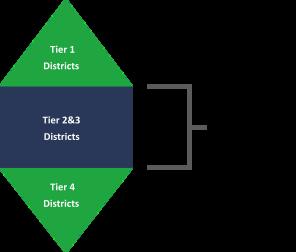
Type District Popula on (million) % Tier 1 25 118 9.1 Tier 2 54 209 16.1 Tier 3 165 550 42.3 Tier 4 396 423 32.5 TOTAL 640 1300 100
Jagriti mainly Focuses on this 9 Verticals and 5 Horizontals
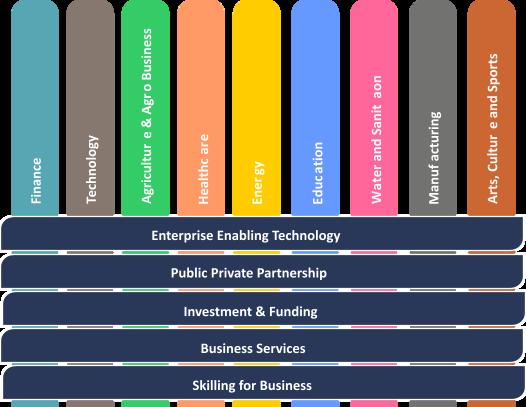
In following its vision of Building India through Enterprise, Jagriti has arrived at nine verticals and five horizontals that are focus areas These areas have been chosen as we believe over the coming decade a number of enterprises can be created in these areas, and these enterprises will in turn take these sectors forward Within this agenda, Jagriti looks to adapt and replicate successful enterprise models, so that these can be scaled up across Middle India Each district will act as an epicentre of development for all nearby regions.
Programming schedule of
24th Dec (23:30hrs) Mumbai (CST) Launch event(6PM-8PM)
25th Dec On Train
Dec 26th Dec (22:00hrs) Hubali (Dharwad) Kalkeri Sangeet Vidyalaya, Selco Arts Culture & Energy
Dec 27th Dec (20:00hrs) Bangalore (Whitefield) Jagriti Enterprise Mela
#JY2018 Date Place Tentative list of institutions/activities Vertical/Horizontal representedArrival Departure*
26th
27th
All Verticals
28th Dec 28th Dec (20:00hrs) Madurai Aravind Eye Care Healthcare
29th Dec 29th Dec (20:00hrs) Sri City (Tada) Sri City Industrial Town Manufacturing
30th Dec 30th Dec (20:00hrs) Vizag
Akshaya Patra Foundation
Public Private Partnership
IGIAT Visit Energy
31st Dec 31st Dec (23:30hrs) Ganjam (Brahmapur) Gram Vikas Water & Sanitation
1st Jan On Train
2nd Jan 2nd Jan (20:00hrs) Nalanda (Rajgir) Nalanda University Education
3rd Jan 4th Jan (12:00hrs) Deoria (Gorakhpur)
Biz Gyan Tree (B-plan competition)
5th Jan 5th Jan (23:30hrs) New Delhi (Safdarjung) Goonj Social Enterprise
6th Jan 6th Jan (20:00hrs) Tilonia (Ajmer) Barefoot College Education
7th Jan 7th Jan (22:00hrs) Ahmedabad (Gandhinagar)
8th Jan (12:00hrs) Mumbai
Sabarmati Ashram
Arts Culture Valedictory Function
*Within the Place column the names written in Bracket are actually the Railway Stations names.
How does Yatri's Grouping and Structure work?
Of the 9 verticals JY focuses on, every candidate chooses his/her Area of interest within the Application form To help create more focused discussions on-train, the Yatris are grouped based on verticals. Every group has Yatris with similar vertical interests. Where possible, the facilitator too would have a similar area of interest.
Though the Yatris from a group share a common vertical interest there is diversity with regards to their profession, state they belong, urban non urban etc. International Yatris add a global perspective. This diversity adds a lot more value to discussions. Such grouping not only helps focused vertical based discussions but also helps group members discuss their business ideas, get inputs from their group and facilitator. It also facilitates collaborations, formations of teams around business ideas.
Facilities on The Train
● Healthy Meals with Mineral Water to Drink
● Washrooms/ Toilets/ Bathing Cubicles/ Laundry
● Web/ blogging facilities on limited number of laptops
● One male & one female doctor
● First Aid Kit, oxygen cylinder and other medical equipment
● Security guard between each pair of compartments.
● And More….
Let’s move on to the core of the Yatra Takeaways, starting from the Panel Discussions on the topics of National Importance during Yatra.
Madurai, Dec 28th 2018
Topic: Reimagining Healthcare for India
The Indian healthcare sector is diversifying and opportunities are emerging in every segment, be it providers, payers or medical technology. With growing competition, organizations are cognizant of new challenges and are looking to explore the latest business dynamics and trends impacting their segment.
New players are building their entry strategy and domestic players are exploring new care models to stay ahead Indian healthcare is experiencing a new wave of opportunity. Providers are reinventing existing delivery models to bring healthcare closer to the patient. Emerging trends are changing the course of the industry which include change in the government’s role from provider to payer, it has expanded the financial risk protection coverage to the marginalised. Private sector partnerships through health PPPs are gradually gaining acceptance, thereby improving access to care. The significant demand supply mismatch has led healthcare to emerge as an attractive sector for many investments
Discussion featured various opportunities and challenges pertaining to Healthcare in India. Covering the different actors associated with this space, sharing insights and experiences that will benefit aspiring entrepreneurs to reimagine Healthcare
Vizag, Dec 30th 2018
Topic : Rise of Women Entrepreneurship /Celebrating Women Entrepreneurship
Women entrepreneurship is gaining importance in India in the wake of economic liberalization and globalization. The policy and institutional framework for developing entrepreneurial skills, providing vocational education and training has widened the horizon for economic empowerment of women. However, women constitute only one third of the economic enterprises. There exist a plethora of successful business women entrepreneurs both in social, sports, finance, entertainment and economic fields in India.
Women entrepreneurship in the country has been on a rising graph in recent years. In this day and age, India can proudly say that women entrepreneurship is not an obscure concept any longer. Over the past few years, India has record growth in women entrepreneurship and more women are pursuing their career in this direction.
However, entrepreneurship development and skill training is not the only responsibility of the Government and therefore other stakeholders need to shoulder the responsibility. Women owned businesses enterprises are playing a more active role in society and the economy, inspiring academics to focus on this interesting phenomenon The country is now with women who want to break out of their predetermined roles and wear the founder’s hat. Women entrepreneurs, with the support of their families, their husbands and even their children, are now successfully embarking on the fulfilling path of entrepreneurship The number of female founders shining in our country will only rise, and we could not be prouder of our women.
Nalanda, Jan 2nd 2019
Topic: Fostering the Spirit of Investments & Funding at different stages of an Enterprise
India is in its best ever phase of the startup ecosystem and the economic environment is favoring the aspiring minds. However, careful planning and futuristic approach are imperative to ensure your startup doesn't end like the 94% that shut down their shutters within the first year of operation.
Lack of funding turns out to be one of the common reasons. Money is the bloodline of any business. The long painstaking yet exciting journey from the idea to revenue generating business needs a fuel named capital. That’s why, at almost every stage of the business, entrepreneurs find themselves asking How do I finance my startup?
Now, when you would require funding depends largely on the nature and type of the business. But once you have realized the need for fundraising, below are some of the different sources of finance available.
Funding is an extremely significant aspect in line with meeting the vision of a business. Funding and fundraising, both are fundamental modern business scenarios that support the growth of a startup The first round of funding, popularly known as seed funding forms the basis of fundraising. It is followed by series A, B and C rounds of funding. While the seed funding typically refers to the basic, initial round of funding, series A, B, and C differ in the business maturity and the type of investors involved The series funding helps in the evolution of a startup to a full fledged organization by helping it with calculated funds at crucial steps. Funding is required to take the best advantage of the existing and upcoming market opportunities. The market has given a strong signal in the year for entrepreneurs to create innovative propositions and not me too products.
If you want to grow really fast, you probably need outside sources of capital. If you bootstrap and remain without external funding for too long, you may be unable to take advantage of market opportunities. While the plethora of lending options may make it easier than ever to get started, responsible business owners should ask themselves how much financial assistance they really need.
Now the big question is How do you prepare your business for fundraising?
Ahmedabad, 7th Jan 2019
Topic: Emergence of Entrepreneurial Ecosystem for Enterprises
Based purely on the perceptions of the entrepreneurs, rather than any factual analysis of the factors, the study aimed to identify the elements involved and benchmark the development of a conducive entrepreneurial ecosystem across India. The conclusions have thrown up the general confidence in the Indian economy and the belief that ‘things are moving in the right direction’. Entrepreneurs are bullish about the ecosystem Expectations of entrepreneurs from the states, generally considered to be leaders in entrepreneurship, expected more from their ecosystem and thereby held the state to a higher standard. The study reinforced the widely held assumptions that Risk Capital is still not available in the desired amounts; and governance issues and local environment in the ecosystem get failing grades.
The changed business climate of India can be judged from the fact that the country is considered to be amongst the three top investment destinations The recent surge in startup activity builds on this foundation of the knowledge economy and has led to the creation of several highly valued technology driven startups. At a glance, the ecosystem seems to have all the critical elements in place a large market, high quality talent and access to financing. However, there is anecdotal evidence of several issues that are simmering In summary, the Indian startup ecosystem shows promise but several issues persist. Against this backdrop, the following round table discussion takes stock of the opportunities and challenges that face the Indian startup ecosystem and where it is headed in the coming years. The discussion will take a closer look at the three critical elements of the entrepreneurial ecosystem the market opportunity, access to finance, and the quality of human capital, with a particular emphasis on the role of education. It also flags important socio cultural and gender issues that impact the pool of human capital available to participate in entrepreneurial activities. The discussion gives important insights into the ecosystem but also raises more quesons for practitioners, academics and policy makers that need further reflection and exploration.
Daily Activities & Experience
Day 1: Tata Institute of Social Science, Mumbai
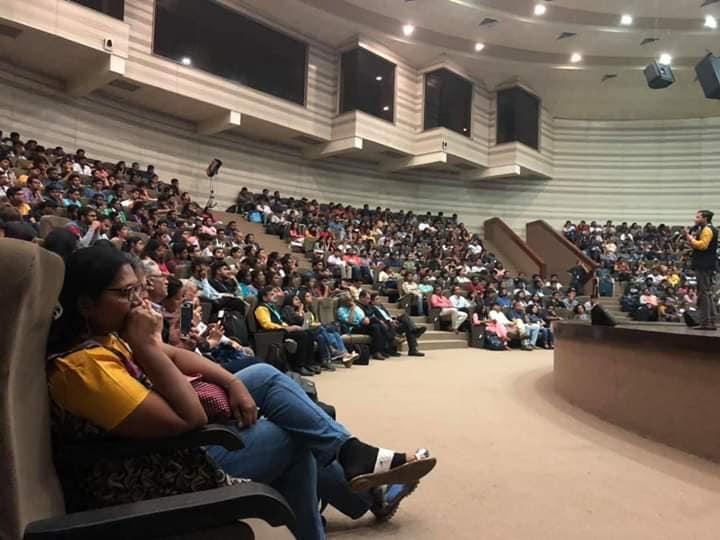
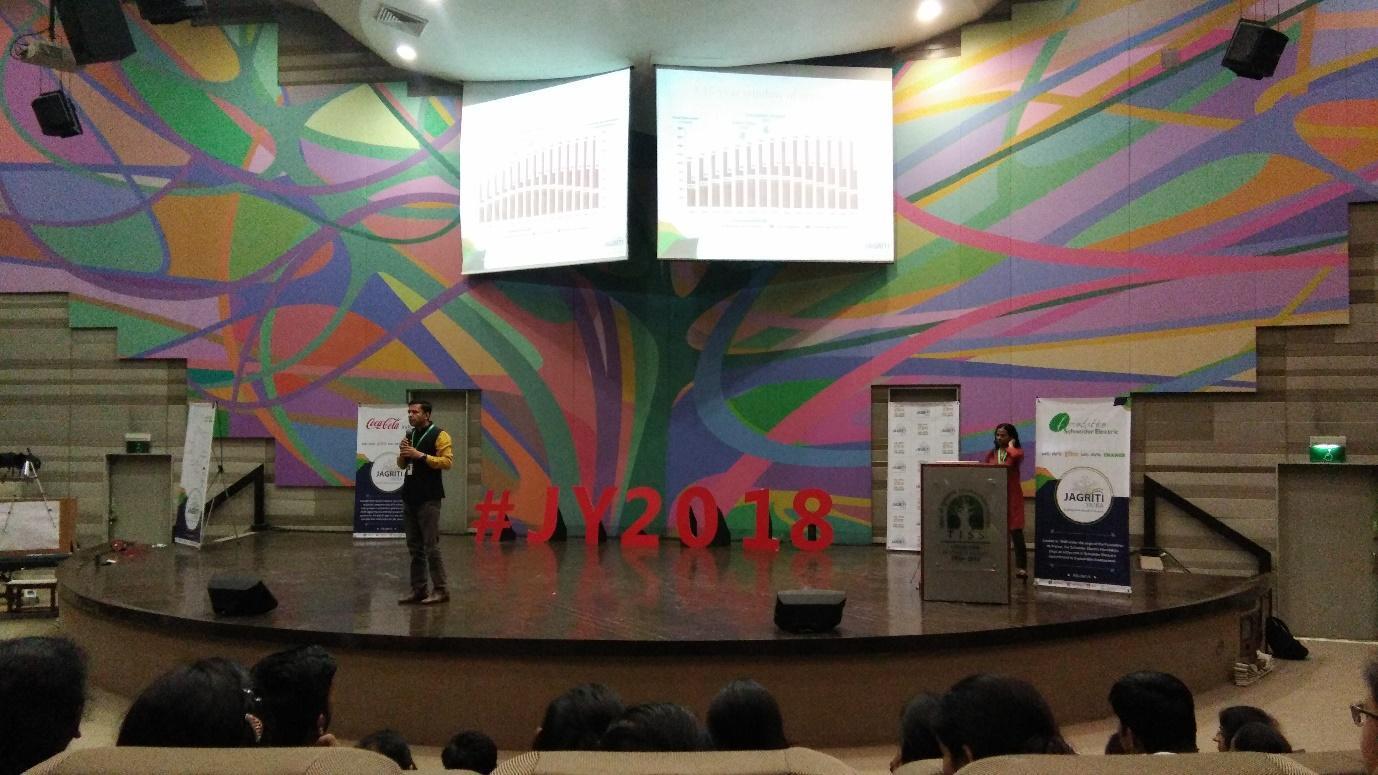
The whole day was spent at Tata Institute of Social Science. The activities throughout the day included registration, luggage onboarding, receiving the Yatri Kit, getting known to the group members and the Induction program being an important element of the day. The kit included an Identity card, Yatra Guide, Writing pad & pen, a badge,T shirt, Jute bag and a Welcome Letter.
The very new thing introduced in this Yatra was the Yatra App specially made for Yatris to keep them updated with each of their boggy number, compartment, group, guide, yatri parichay (a pdf with each of yatris photo bit introduction and email id), and daily schedules updated each day. To keep the communication seamlessly easy they also created 2 whatsapp groups
 Yatris in Induction Program
Yatris in Induction Program
The Induction Program was conducted by JY team and JY Board Members. It included the briefing about the Yatra, operational activities, do’s & don't, along with stories of past experiences with Yatris. The Jagriti Song was introduced to us for the very first time by respected Gauri Ma’am (Extended Team member of JY). The Program ended with the National Anthem of India.
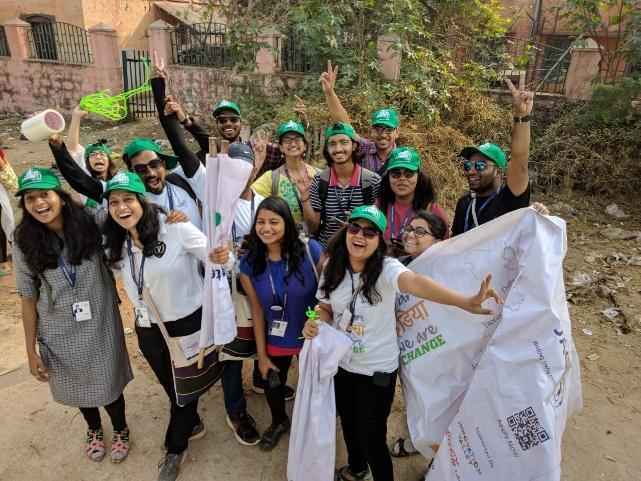
Day 2: On Train itself
Our day started early in the morning with the announcement in the PA system within the train which is managed by the ERC Team(Engine Room Club Members).
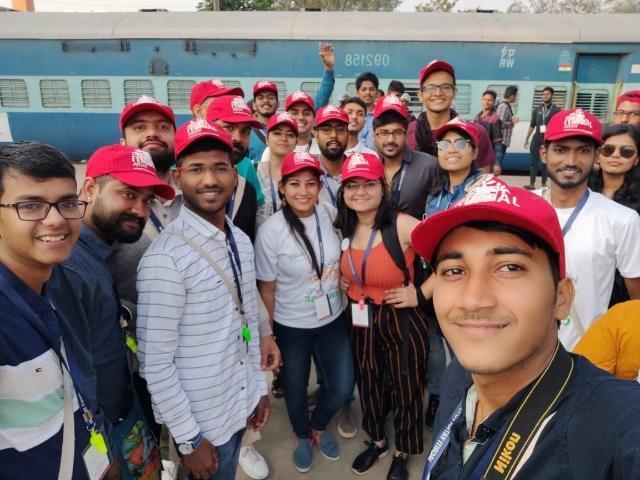
As this was the very first day on the train and already all yatris had travelled a lot arriving in Mumbai we were given some time to rest and get used to the train. Tea and breakfast were served at our own bogies soon Pre Lunch some teams were introduced to the JY Team, some protocols to be followed during yatra and few other instructions. We were also introduced to the lifeline exercise, which you now know how it works This was the perfect time for the exercise to get connected and individual life stories kept on inspiring each other. And from this I experienced the saying by some personality that “Everyone has a story to tell”. Post Lunch the remaining team went through the same process.
Branding Team Deesa Team
At the end of session every one was introduced to the volunteer opportunity during the Yatra. There were two volunteer teams formed out of the Yatris led by ERC Members One was Deesa Team for guiding the way while role model visits and second was Branding Team managing the branding materials and venue before we Yatris arrive at the actual venue.
THE LIFE LINE EXERCISE
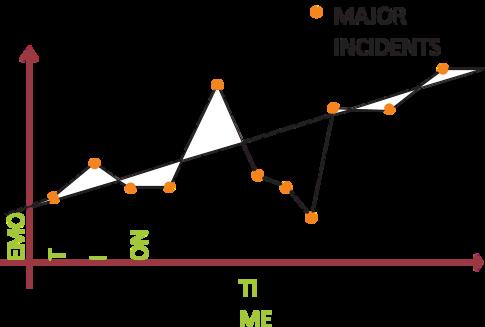
The Life Line exercise was initiated as an activity amongst our cohort/group members, so as to introduce ourselves and lay the platform for the interactions through the rest of the journey. It is nothing but a storytelling activity about ourselves, using the simple tool of life line graph. Life line is a two fold graph, with time (age) on the X axis and a rating scale on the Y axis (Emotions). The graph is a continuous line with various events in your life starting from your birth forming the various points (vertices) in the graph, the ups and down indicating the various high and low points in your personal and professional career

The activity was less of an introduction and more of a self reflection During the activity, it was interesting to find that people rated even their low points in their life on a positive range as they considered events like these that taught them to progress in life, and it was highly inspiring for the listeners. What makes this activity a great icebreaker is the fact that one person’s way of talking reflects on the others when one of my group members opened up and spoke a little more, all the other yatris followed suit creating an emotional bond for the group.

Day 3: Kalkeri Sangeet Vidhyalaya

Our Train took a halt at Dharwad Station. After having breakfast, we left for our first role model visit to Kalkeri Sangeet Vidhyalaya which is near Hubli via buses. There were two role models to be studied along with their enterprises:
1. Mathiew, Founder of Kalkeri Sangeet Vidhyalaya
2. Shanti from Selco India
Introducing Kalkeri Sangeet Vidhyalaya to us, Mathiew stated that KSV following the gurukul concept empowers, supports and encourages children from socially marginalised and economically disadvantaged backgrounds to realise their full potential and attain a better life. In such an atmosphere the children learn many social skills and KSV ensures they receive a nutritious diet and adequate healthcare facilities. Care, Love and compassion are fundamental elements of the whole process. In Short, KSV is a perfect incorporation of art & culture along with the regular curriculum.
Shanti stated that SELCO views energy access as an underlying precondition to catalyse progress related to health, education, livelihoods, financial inclusion and so on leading to overall improvement in quality of life. It understands the root of the problem within context and then assesses how energy can resolve it. The very interesting part about Selco is that they work with local financial institutes creating a financial linkage between them and the communities of poor people to cater the need of electrification. And the more astonishing fact is that these so called poor people pay their installments well in advance without fail
Day 4: Jagriti Enterprise Mela, Bengaluru
The Jagriti Enterprise Mela is designed to be a festival of enterprises, enterprises that are working with a social focus in seven sectors (verticals in jagriti lingo) across rural and urban geographies, offering a product, service or both, covering some specific facet, need or opportunity out there, enterprises which were a mix of profit, non-profit, not for profit and hybrid (both profit and non profit arms) enterprises which are innovative startups to well established ones that had significant traction and impact, all

with a vision to build a better India. This year’s mela also specially included stakeholders from the funding and support services ecosystem
The reason for this mela format in a Jagriti stop is to involve a lot more awesome entrepreneurs with our mission, foster more collaboration across geographies and markets with such interactions, collaboration that is extremely vital for success and impact for what we all do addressing issues, and challenges across this vast and diverse land.

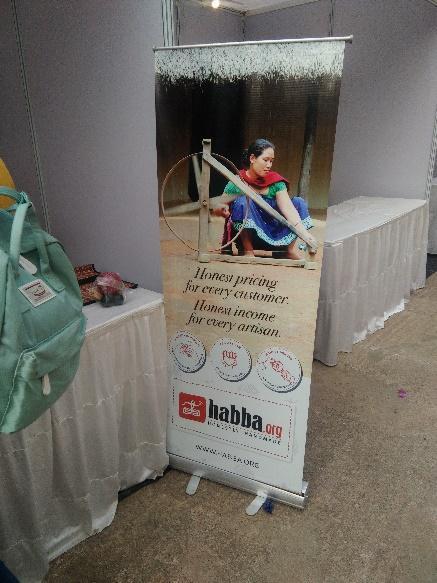

Day 5: Aravind Eye Hospital, Madurai
Madurai, the third largest city in Tamil Nadu, is the oldest inhabited city in the Indian peninsula and is located on the banks of the River Vaigai in the Madurai district. The city is widely known as the Temple city. The city is home to various automobile, rubber,
Glimpse from Jagriti Enterprise Mela
chemical and granite manufacturing industries. It has developed as a second tier city for information technology (IT) and some software companies
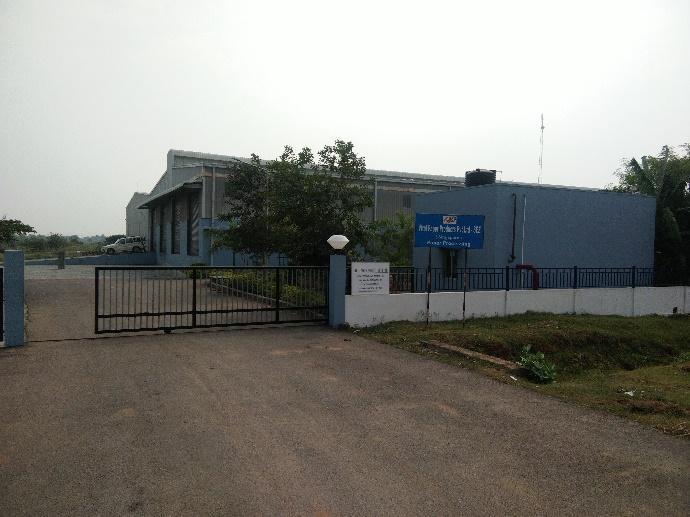
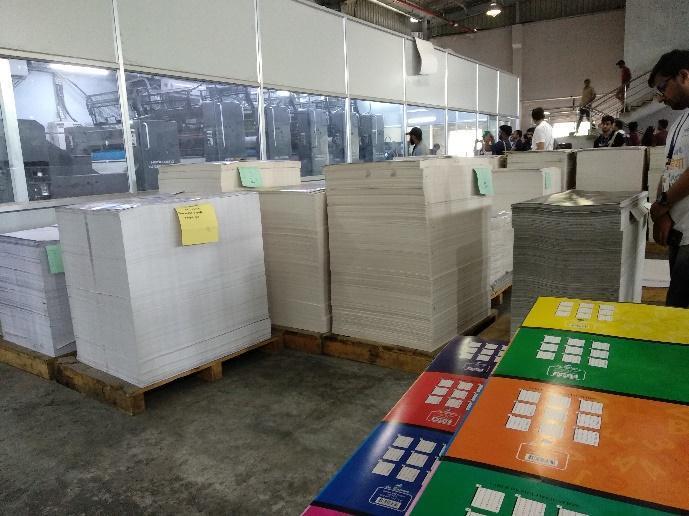
Govindappa Venkataswamy, Padma Shri awardee (1973), founded Aravind Eye Care System in 1976 with a mission to eliminate needless blindness in Madurai, Tamil Nadu. Aravind began performing surgeries on a large scale with treatment being free or heavily subsidized for the poor cross subsidized by the paying patents. Today, Aravind Eye Care System today is the largest and most productive eye care facility in the world.
The words of wisdom by the speaker were: “Money is a dividing factor whereas purpose is a factor which unites people.”
We also visited a few centres personally and the process they have standardized to manage thousands of people each day was just fabulous.
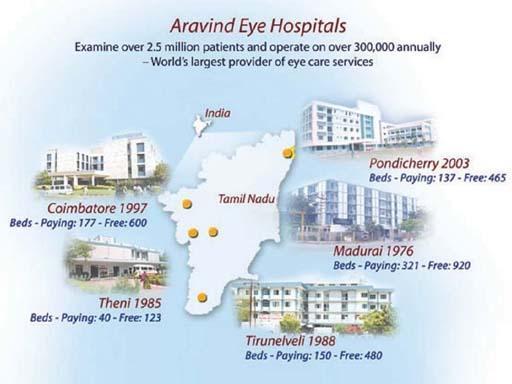
Day 6: Sri City, Andhra Pradesh
Sri City is on its way to becoming a hub for large and medium scale industries, such as Engineering, Electronics, Automotive, Aerospace, Apparel, Renewable Energy, Biotech/Pharma, Sporting Equipment & Toys, Logistics and Warehousing, IT/ITES/BPO, Education & Training Institutes, other Eco-Friendly Industries
Spread over 7500 acres, Sri City includes a multiproduct Special Economic Zone (SEZ), a Domestic Tariff Zone (DTZ), a Free Trade & Warehousing Zone (FTWZ) and an Electronics Manufacturing Cluster. Sri City is home to over 175 companies from 27 countries including multinationals like Kellogg’s, Isuzu, Mondelez, Pepsi, Alstom, Kobelco, Foxconn, Danieli etc.

Day 7: Akshaya Patra, Visakhapatnam
The Akshaya Patra Foundation is a not-for-profit organisation headquartered in Bengaluru, India. Akshaya Patra strives to eliminate classroom hunger by implementing the Mid Day Meal Scheme in the government schools and government-aided schools Alongside, Akshaya Patra also aims at countering malnutrition and supporting the right to education of socio economically disadvantaged children.
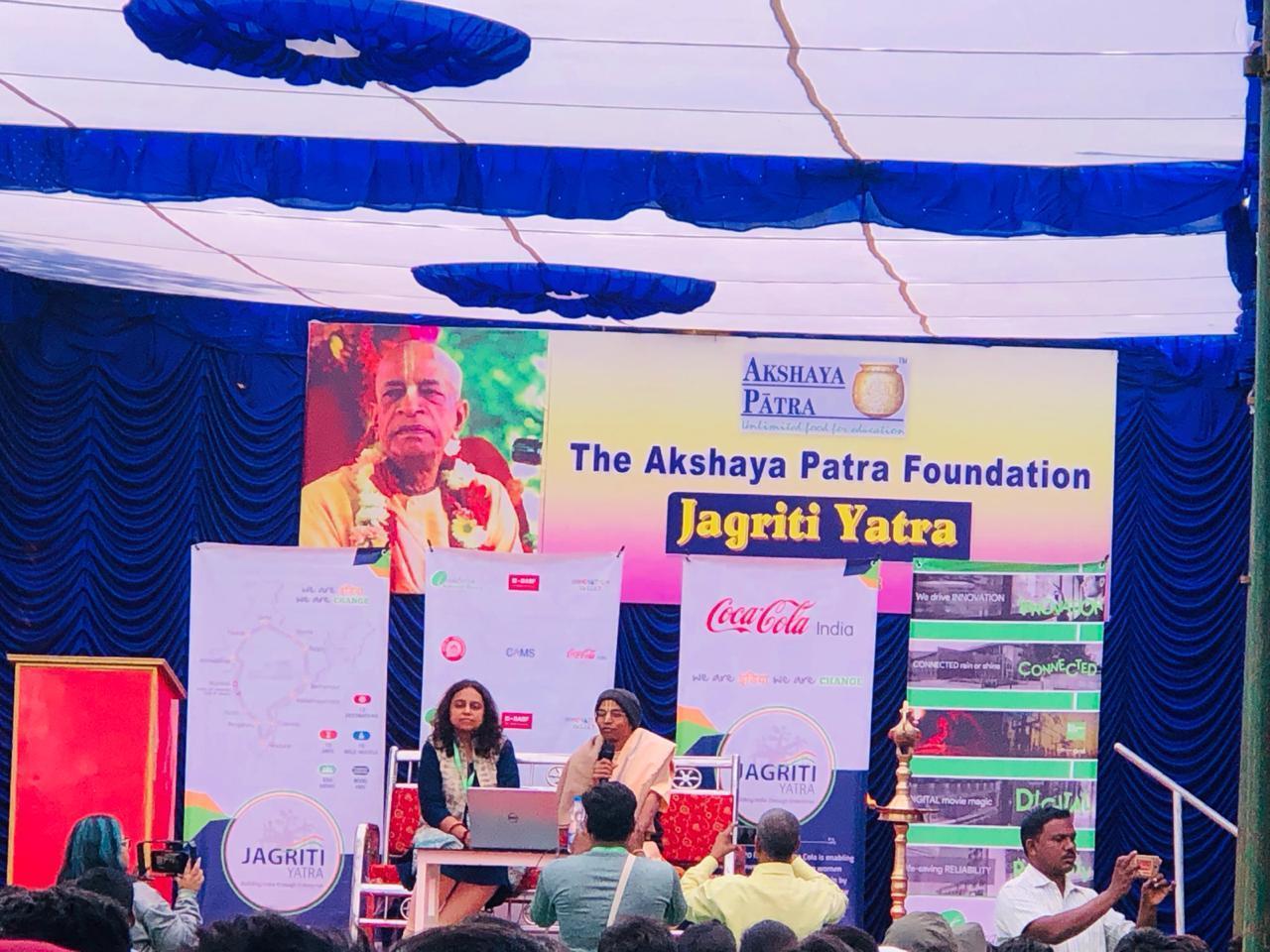
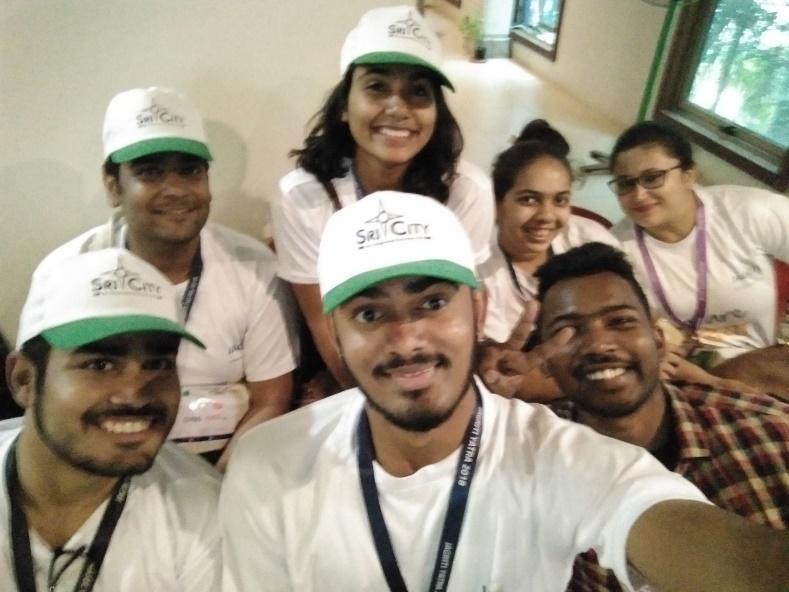
These kids are served by Akshaya Patra every day in their respective schools. Akshaya Patra is now also exploring solutions to feed these kids during holidays & vacations too. Such kids sometimes need to choose between Books & Hunger, which Akshaya Patra is taking care of so that they don’t face it again. Thanks, Akshaya Patra for everything you do for such innocent and proactive kids.

Akshaya Patra has 39 kitchens spread across 12 states in India, a result of the successful partnership with the Government of India, various State Governments and generous supporters.

Day 8: Gram Vikas, Ganjam
Gram Vikas, which literally means 'Village Development', is an organization that has been working since 1979, to bring about sustainable improvement in the quality of life of poor and marginalised rural communities mostly in Orissa. Gram Vikas helps marginalized tribal groups and scheduled castes organize themselves to solve a wide range of social and health problems


Gram Vikas currently serves more than 250,000 people in 701 habitations of 21 districts in Orissa. Gram Vikas constructed 54,047 plants in over 6,000 villages spread over 13 (undivided) districts of Orissa, including the tribal dominated districts such as Ganjam, Koraput, Sambalpur and Mayurbhanj. These plants, during the period accounted for about 80% of the biogas plants in Orissa and about 4% of the plants in India.
The 31st Celebration

// It was really too much fun to enjoy the 31st at Brahmapur Railway Station.

Day 9: On Train (From Ganjam to Nalanda)
After celebrating 31st night this was the day to go for action again. We had sessions on the train about the briefing of the Biz Gyan Tree (BGT Exercise). And after the session each team started with brainstorming
Day 10: Nalanda, Bihar


Nalanda was built in 5th century CE, originally by Emperor Kumaragupta I of Gupta Dynasty. It remained a learning centre from 7th century BCE through c. 1200 CE and is many a me categorised as one of the early universities of India along with other institutions like ‘Vikramashila’ and ‘Taxila’. Khilji decided to destroy the roots of all knowledge and ayurveda in this country. So, he set fire to the world's oldest library, with 9 million books containing thousands of reputed manuscripts burnt for several months
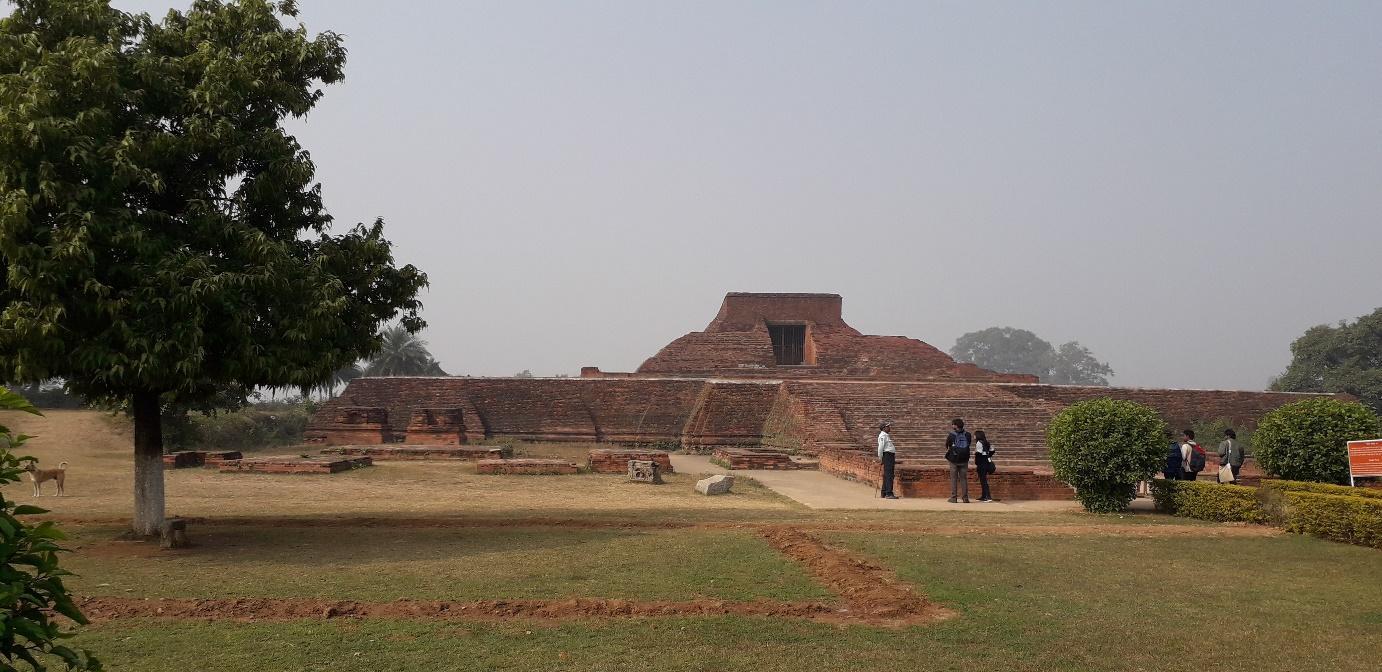 Nalanda Remains
Nalanda Remains
The Nalanda University
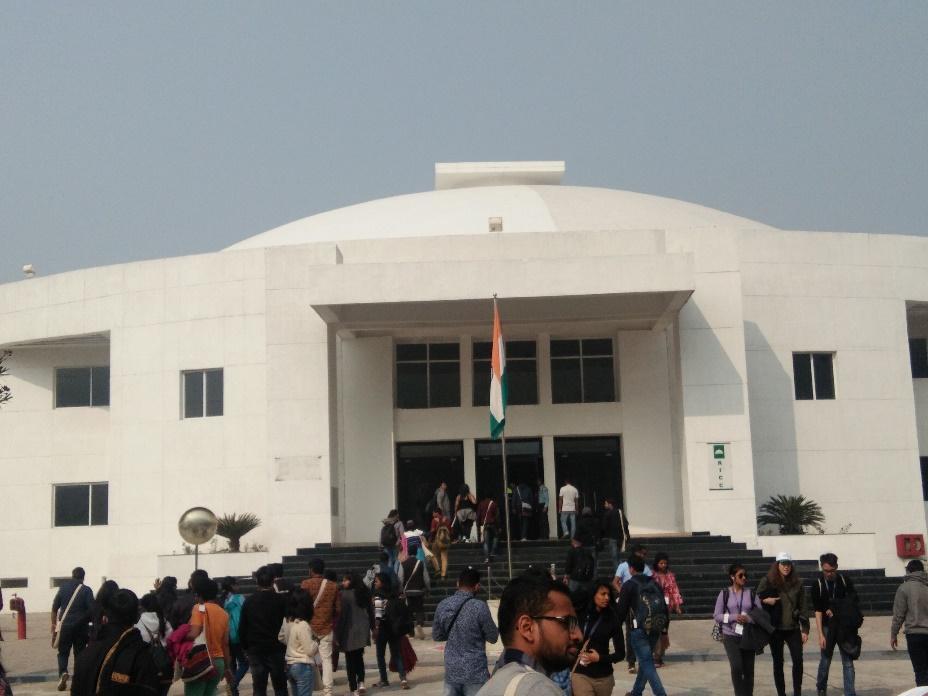
Nalanda University is a newly established university located in Rajgir , near Nalanda , Bihar, India. The first academic session began on September 1, 2014, with 15 students, five of whom were women. The university is home to schools that teach Historical Studies, Environment and Ecological Studies, Buddhist Studies, Philosophy and Comparative religion
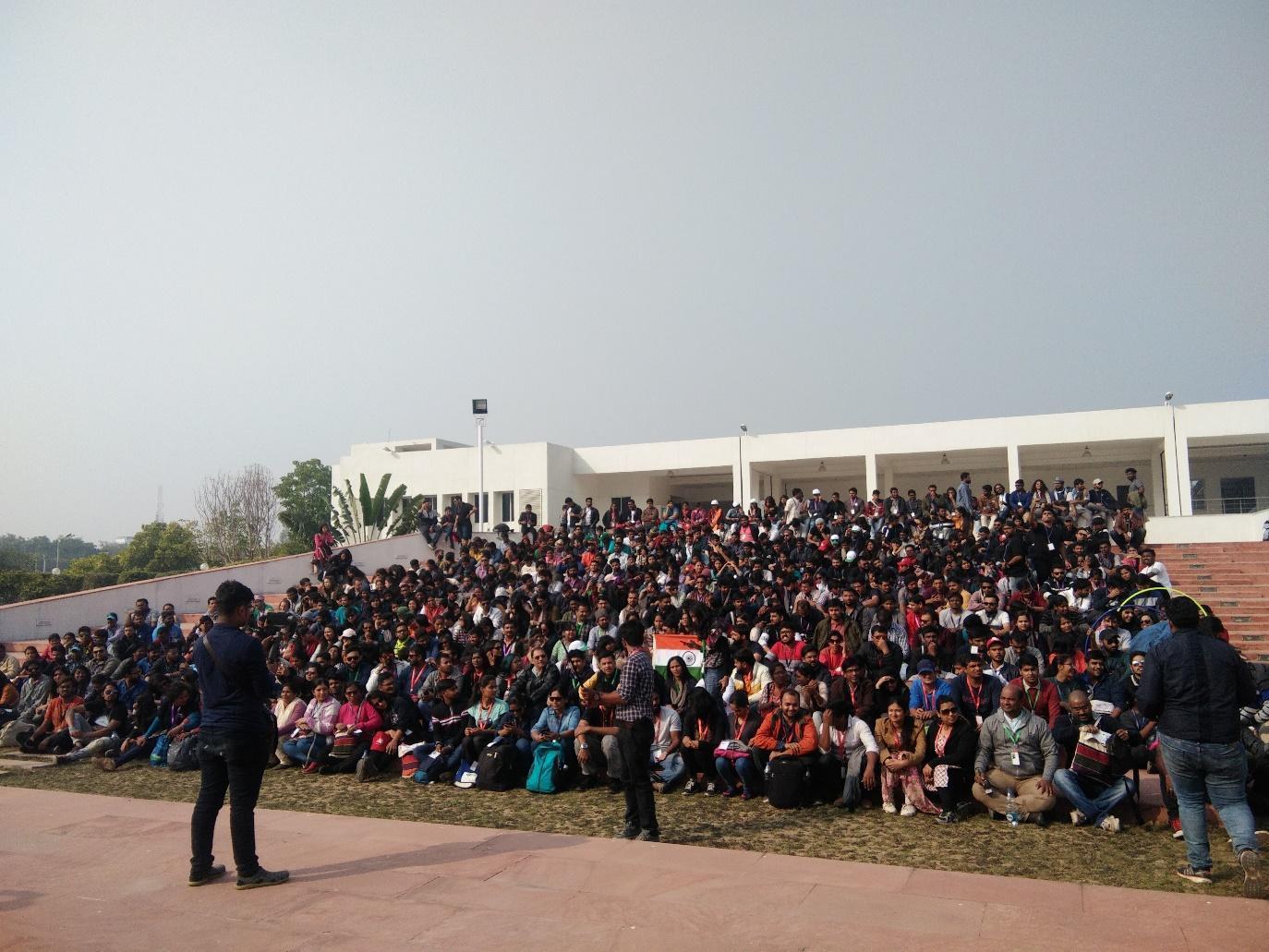
Day 11: Deoria, Uttar Pradesh


Deoria is the HQ of Jagriti Seva Sansthan. The Deoria port of call is designed very strategically to sway the Yatra towards a more action oriented path. Instead of looking at role models who have already created an institution or an enterprise, we will visit an area that is just starting on this journey. To compound the situation, Deoria is located in an underserved region of the country and therefore some of the cultural and socio economic issues that prevent enterprise led development to flourish exist here Our purpose therefore is to visit a typical village and have discussions with nascent social and economic enterprises, with a view to see how you could scale them up. The visit will focus on a workshop environment in a typical eastern UP village, so that you get a real sense of the challenges and joys of starting enterprises in rural India It will be followed by a public welcome to Jagriti Yatra by its mother institution.
The BGT Exercise
The BGT exercise encourages yatris passionate about ideating and building things from scratch to put together the building blocks of an enterprise. The sheer joy of seeing young people from different parts of India come together in an unfamiliar environment, overcome barriers posed by language, geography, culture etc to create an enterprise is how one can choose to define this activity. Every year, the yatra gives this platform to young minds from across the country (and abroad) to come together to mould their ideas, get mentored by some brilliant minds from across the social and business entrepreneurship landscape and finally give shape to these ideas and pitch in front of a panel comprising of diverse and relevant stakeholders including subject matter experts and investors
The process began with company registration which was followed by distributing the responsibilities of organization amongst the group members. The evolution of ideas
Internet Saathi is a digital literacy program for rural women. The program is run in 7 districts of eastern Uttar Pradesh Deoria, Gorakhpur, Kushinagar, Balia, Maharajgunj, Santa Kabir Nagar, and Mau. The aim is to train around 2 million rural women with the help of 4000 digitally trained and equipped Internet Saathis.
took place after Behrampur, Orissa as the groups had multiple meetings to brainstorm, translate their thoughts and put those on the business model canvas Facilitators were given the role of Non Executive Directors and were entrusted to mentor their teams through this process. The highlight of the stop at Nalanda was the panel discussion on how important it is for an entrepreneur to understand and adapt to the culture of a place, be it urban or rural This contributes to their being able to empathize with the local people which in turn is essential for them to succeed in their entrepreneurial endeavour.
Once we arrived in Deoria in rural Purvanchal, eastern Uttar Pradesh, the teams got the chance to test their theoretical frameworks in real time. Yatris were split into groups and sent to fourteen different villages Barpar, Karjaha, Barari, Rampur Vanhar, Sardapar, Chaturbhujpur, Keshavari, Igrahi, Barwaliya, Sakrapar Khurd, Sakrapar Buzurg, Akathiya, Dhanaulti and Belwa. They were tasked to go around the village, talk to the villagers, and get their inputs to test and potentially reshape/remodel their ideas if required. The process culminated with the groups making presentations to the beneficiaries (villagers), Judges and audience (Yatris) Ideas were examined on parameters like innovativeness, feasibility, replicability an
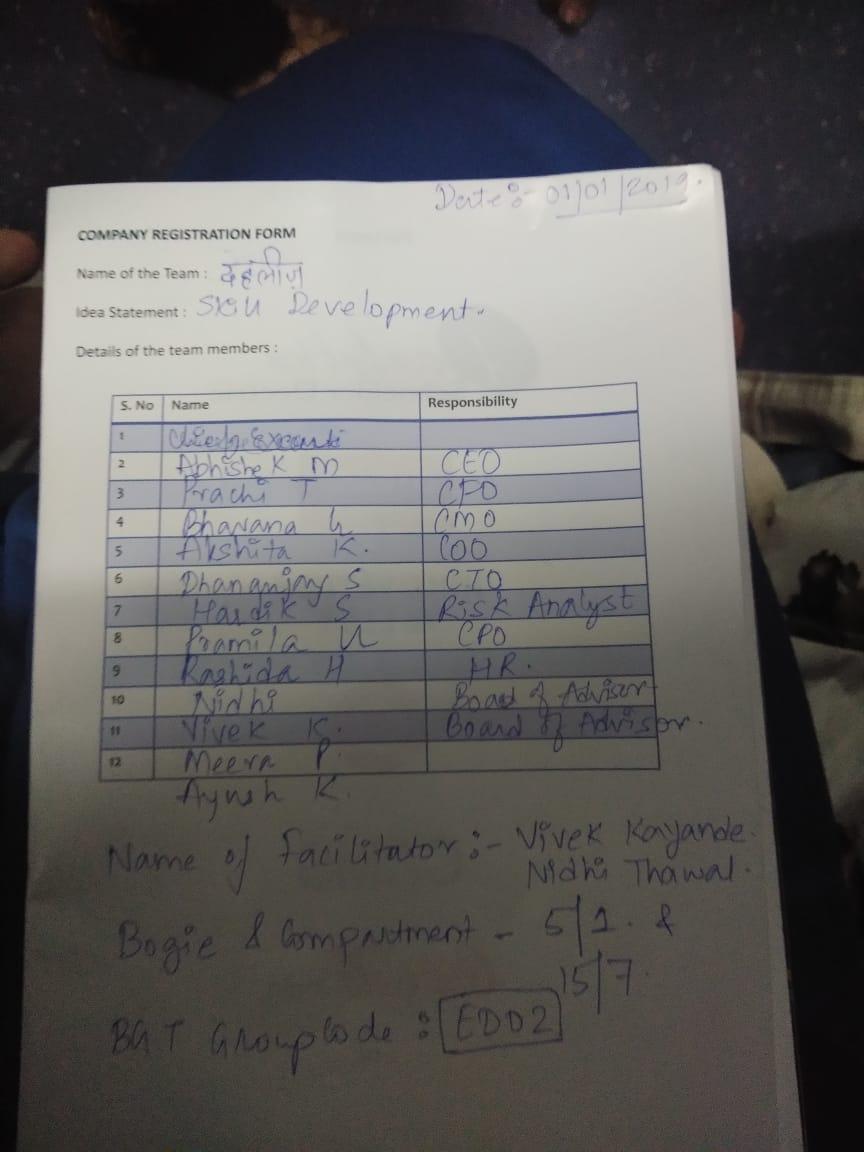


Day 12: Deoria to Delhi
The early morning started with meditation at Banyan Tree where the Jagriti Enterprise Centre (JEC) is about to be established. Jagriti Enterprise Centre is a physical brick-and-mortar centre that will catalyse the growth of Purvanchal as it becomes the center for Incubation of SMEs, a forward looking urban planning, a place to bring communities together and a
window to middle India for the rest of the country. A piece of land around the iconic Banyan tree, the architecture for a center in an inspiring spiral form, conceived by Trupti Doshi, a Yatri, who is a renowned award winning architect and sustainability engineer. The creation of the JEN & JEC is part of a national mission of creating four dhams / centres of enterprise in the four cardinal corners of the country Deoria in Uttar Pradesh, Karjat in Maharashtra, Madurai in Tamil Nadu, and Ganjam in Odisha
After departure we had chair car sessions on the train followed by facilitators meeting and compartment discussions.
Day 13: Goonj, Delhi
Goonj is a unique resource mobilization initiative, providing clothes and other basic amenities to millions in the far flung areas, by turning one's wastage into a resource for another.



Initiated in 1998 with just 67 clothes, they now send out over 20,000 Kgs of material every month in 19 states. A force of over 300+ volunteers, Goonj has built up a network of over 100 grassroot organisations, Panchayats, Ashoka fellows, social ac visits & units of Indian army in rural India Goonj expertise in supply chain management and operations. During any natural disaster Goonj manages to send and distribute the collected material to the right place through a well managed volunteer base network all over India
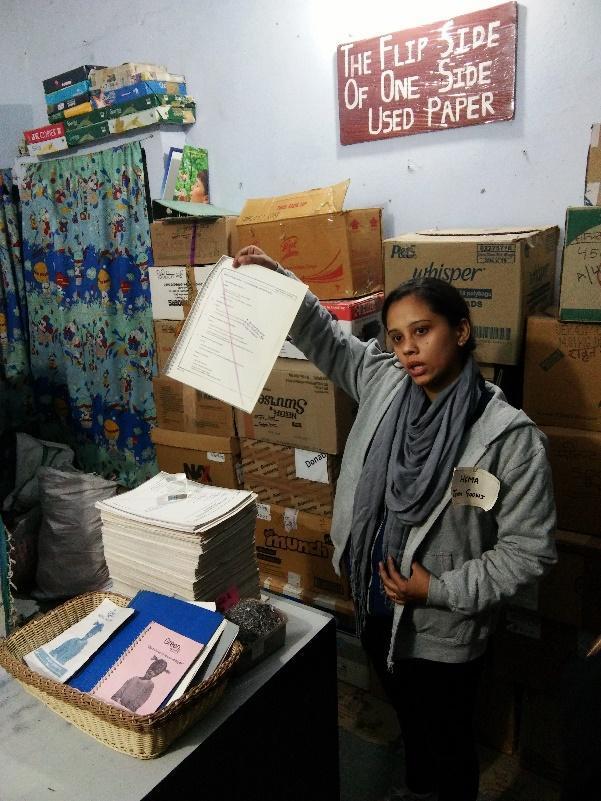 Anshu Gupta, Founder Goonj
Anshu Gupta, Founder Goonj
Day 14: Barefoot College, Tilonia
Sanjit 'Bunker' Roy is an Indian social activist and educator. In 1972, he founded the Barefoot College in Tilonia, Rajasthan. Roy was influenced by the philosophy of Mao Zedong, and modeled his organization after Mao's Barefoot Doctors Barefoot College connects rural communities to necessary solar, water, education, livelihood and advocacy to help communities and individuals to take control of their lives and their wellbeing
The Barefoot Approach has spread to 72 countries over the past five years. Barefoot College has been successful in developing a wholly sustainable artisan industry that now offers more than 500 craft professionals a viable livelihood The Barefoot College health care programme provides basic health services to more than 150 villages.
Day 15: Gandhi Ashram, Ahmedabad


Located on the banks of the River Sabarmati, Ahmedabad is the first city in India to be declared as a UNESCO World Heritage City. The old walled city was founded 600 years ago by Ahmed Shah I. Today, the city is known for its temples, heritage sites with Indo Islamic architecture, as well as a city of peace where Mahatma Gandhi began India’s freedom struggle. Ahmedabad has now emerged as an important economic and industrial hub in India
 Solar Mama’s singing “Hum Honge Kamyab” song
Solar Mama’s singing “Hum Honge Kamyab” song
Formed in 1990 with the mission to serve the underprivileged, Jayesh Patel is the co founder and director of Manav Sadhna, an NGO based in the Gandhi Ashram in Ahmedabad.Manav Sadhna provides health and hygiene, education, and employment services to over 4,500 women and children through over 38 projects. The valedictory ceremony was organized in EDI, Ahmedabad.



Our Proud Facilitators My Group —------------------------------------------------------------------Thank You Team Jagriti
Thanking Proud Sponsors for My Jagriti Yatra
1. GTU Innovation Council

GTU Innovation Council's main aim is to give more and more innovative startups who can generate jobs and give support to our economy The Council targets to create a management system, which uses the existing structures and facilities by bringing them together for working for innovation. The council has decided to document every single success and to make the information available to all the stake holders to develop self confidence in the whole of the system. One key aim of this mission is to develop inter-relationship for national and international collaborations for innovation in the fields of Science, Engineering, Technology and Management. The Innovation Council has started strategic steps to establish a close and continuing interaction between the industries & businesses and the students & faculties in all the undergraduate and postgraduate courses like Engineering, Management, pharmacy, MCA and Polytechnics and the faculty members in GTU.
Website : http://gtuinnovationcouncil.ac.in
2. Government Engineering College, Modasa

Government Engineering College, Modasa was established in 1984 under the Directorate of Technical Education, Gujarat State, Gandhinagar in North Gujarat region with a view to spread out technical education in the region and hence promote industrial development. The institute was affiliated with Hemchandracharya North Gujarat University (HNGU), Patan from 1984 to 2007. The institute has been affiliated to GTU , Ahmedabad from 2008. It is recognized by All India Council for Technical Education (AICTE), New Delhi. The institute was started with two undergraduate courses, with an intake of 60 each. At present it runs seven undergraduate courses and two post graduate courses Each department has well established laboratories, computer centers and well qualified staff.
Website : https://www gecmodasa ac in
3. World Ayurveda Foundation

The World Ayurveda Foundation (WAF) is an initiative by Vijnana Bharati aimed at the global propagation of Ayurveda. As part of a larger intellectual movement under the aegis of the Swadeshi Science Movement undertaken by Vijnana Bharati, WAF is a platform that would take Ayurveda to the world for all the benefits mankind can draw from traditional health sciences. Stakeholder involvement by participation, guidance and responsible management is the hallmark of WAF. The objectives of WAF reflect the global scope that its name provides. Propagation and encouragement of all scientific activities related to Ayurveda are the core principles WAF also supports research, healthcare programmes through camps, clinics and sanatoriums, documentation, as well as organisation of study groups, seminars, exhibitions, and knowledge initiatives in different parts of the country and across the world. Today, WAF has a wide array of professional representation from across the world. Students, research scholars, practitioners, therapists, public health administrators, cultivators, collectors, multi disciplinary scientific academics and industry are the prominent stakeholders representing Ayurveda through WAF. Website: http://ayurworld.org
4. Rentah.com

We at Rentah are trying to bring the sharing economy to everyone with an internet connection Our team has deeply varied histories and backgrounds, from South America to East Asia and back here to North America. What we do have in common, and what we like to pride ourselves on, is being a "company for the people." In the process of building this site most of us have worked 2nd jobs, finished school, started paying off school loans, and had to deal with rising rents in New York City! We recognize we are not unique in facing hardships; this is the world we live in. Our goal though, through Rentah, is to help others face similar hardships with dignity, strength, and support. Whether you call it the sharing economy, gig economy, collaborative consumption, or something else, Rentah is the marketplace for most of it. We are an online platform which allows individuals and businesses to rent out, or request, goods and services within their community So, for example, if you happen to be a great baker, why not get started on Rentah, teach some baking classes, and share some of that bread with your neighbors!
Website : https://www.rentah.com
5. Brand India Magazine

Brand India Magazine & TV (India's first Tokenism content curation and distribution platform powered by Blockchain). We are 360 degree hyper local, multi channel Personal Reputation, Brand Positioning and Brand Equity platform for progressive businesses, ideas and innovations, in varied fields from New Age Technology to fashion, from startup journey to the stalwarts in the journey of unplugged opportunities and conversations powered by Blockchain Technology!
Highlights:
1. Global readership footprint 18mn + impressions with 4.38mins average time spent within the first 12hrs (Issue.com/brandindia)
2 Encouraging and promoting innovative entrepreneurial stories and brand positioning. (Global Entrepreneurship Summit committed to feature 100 Global Indian Women entrepreneurs, successfully executed Women 3.0 & Women 4.0)
3. Target Audience & Distribution Nifty 50, Fortune 500 & FTSE 1000 companies, entrepreneur decision makers (Strategic Collaboration with India's largest Animation & VFX Studio based in Mumbai)
4. Distribution International Airport lounges, 4/5* properties, corporate magazine stands and major bookstore shelves (Strategic collaboration with Crosswords & WH Smith)
Website: http://www.brandindiamag.com
Along with these sponsors there were few other people whom I would like to thank personally.
● Hiranmay Mahanta for letting me be introduced to this opportunity and playing a key role in guiding me throughout the crowdfunding process.
● Dr. Tushar Panchal for being the first person to believe in me and contribute to my crowdfunding campaign.
● Mr. Dhaval Kaku for his contribution in funds, social media awareness and suggestions.
● Mrs. Tosha Shukla for being the support throughout my Crowdfunding Campaign.
● Mr. Shubham Jain for helping me with funds in an emergency to pay the fees at the last moment for #JY before the funds were yet to be released by sponsors
● Mr. Karan Sargara for introducing me as Trustee of World Ayurveda Foundation.
● Mr. Suresh Panchal for supporting me with the kind heart and essence of selflessness.
● AND LAST BUT NOT THE LEAST, A VERY THANK TO ALL READERS!!

 Dhananjay Suthar
Dhananjay Suthar







 Yatris in Induction Program
Yatris in Induction Program
























 Nalanda Remains
Nalanda Remains










 Anshu Gupta, Founder Goonj
Anshu Gupta, Founder Goonj


 Solar Mama’s singing “Hum Honge Kamyab” song
Solar Mama’s singing “Hum Honge Kamyab” song







